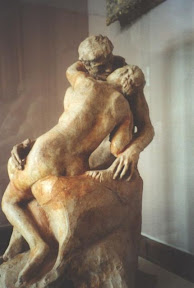 |
 |
 |
 |
 |
 |
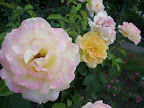 |
 |
Ohope Beach, New Zealand (December 2010)
Musée Rodin & Louvre, Paris, France (May 2002)
rose garden in Vienna, Austria (June 2006)
chocolate, Lawrence, Kansas (2009)
a travel blog that boldly goes…
You are currently browsing the archive for the event category.
 |
 |
 |
 |
 |
 |
 |
 |
Ohope Beach, New Zealand (December 2010)
Musée Rodin & Louvre, Paris, France (May 2002)
rose garden in Vienna, Austria (June 2006)
chocolate, Lawrence, Kansas (2009)
Tags: Austria, chocolate, France, hearts, Musée Rodin, New Zealand, Ohope Beach, Paris, rose garden, Valentine's Day, Vienna
When the semester starts, so does A LOT of responsibility: classes, homework, teaching, etc.
The end of break was in sight. The situation was dire.
Trish, Steven and I figured we had just enough time for one last trip and we headed south…
 |
 |
 |
 |
Tags: details, la Rocca, lunch, Mexico, Nogales, patterns, piñatas, road trip, Sonora, U.S.-Mexico border, winter break
Tags: Christmas Day, New Zealand, Ohope Beach
When it comes to weather, Kansas is a bit unpredictable. I never counted on a white Christmas or even a cold Christmas and always figured I was flexible when it came to how the holidays “should” be. But spending the holiday season in New Zealand this year was confusing.
With the sun out and the beaches full of kids on holiday, there’s no trouble getting into the swing of summer. I can wear sandals, shorts and t-shirts walking to town and eat lunch on my parents’ back patio while the house’s doors and windows are all open to catch the breeze.
On the other hand, I could totally get into the holiday spirit just by reading in the living room next to our family’s tiny Christmas tree with white lace snow flakes, or when the kids the language school where my mom works learned to bake holiday pies.
The problem comes with doing both at the same time. Every time we turn on the radio or tv, there’s advertisements: “Do your holiday shopping during Farmer’s summer blowout sales!” “Get your Kiwi bloke a grill this holiday season!” “Spend your Christmas Eve at AC Baths – swimming, raffles, prizes!” Every time we watch tv, there’s commercials that just do not make sense to me.
I realized just how embedded some of my seasonal patterns are; I get little twinges when things don’t match up, whether it’s tourists who show up in July and complain about the cold or my mother referring to April as “last fall.”
Luckily, this complicated problem has a simple fix : there’s nothing more relaxing or more joyous than a family Christmas picnic at the beach.
Tags: baking, Merry Christmas, New Zealand, Taupo
Growing up in Kansas, the holiday season was always a time of intensity and stress. Big family gatherings meant lots of arrangements, presents and preparation, plus in our family of mixed religious backgrounds, we always ended up trying to celebrate a little bit of everything – but I never felt like we fully landed on anything.
When I went to college and my parents moved to New Zealand, all of this came to an end. Now the holidays were about the winter break from classes and long distance phone calls – definitely less stressful, but also less celebratory.
Now that the move has become semi-permanent, my parents decided that my brother and I should get one annual visit each and this year we’ve all ended up in the same place for Christmas again, albeit halfway around the world from where we used to be. It’s been odd to listen to Christmas music with the windows open for the breeze, or to walk down the block looking at holiday lights in shorts and sandals.
But there’s huge rewards for if you can make the “difficult” adjustment : it turns out there’s nothing more relaxing or more joyous than a family Christmas picnic at the beach.
This post has been entered into the Grantourismo HomeAway Holiday-Rentals travel blogging competition
Tags: Grantourismo, holiday season, HomeAway Holiday-Rentals, New Zealand, Ohope Beach, picnic
A little belated – hopefully, there’s a grace period during fall semester final project time? – but here’s the first of two last posts from October 2010 here in Arizona…
We met up with good friends and drove to Mesa for a Día de los Muerto event, which in Mexico is celebrated on November 1st but in Arizona was celebrated on October 31 (a Sunday, so no school or work closings that way).
Anyway, along with the arts and crafts booths, there was music, dancing, art demonstrations, and at the end of the afternoon, a candlelit altar procession.
 |
 |
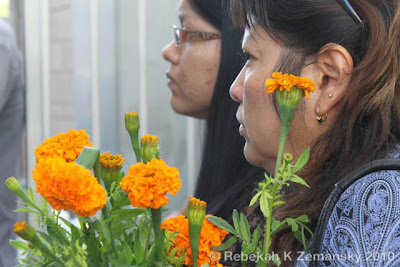 |
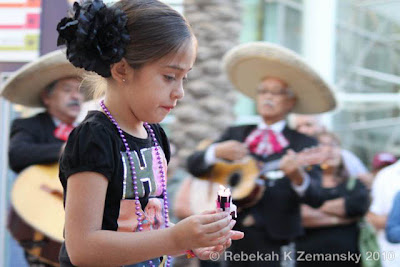 |
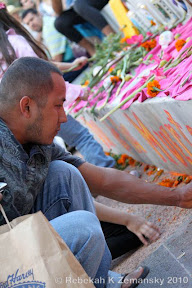 |
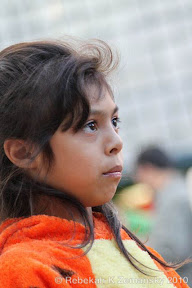 |
 |
 |
 |
 |
Tags: Arizona, Día de los Muerto, glass blowing, mariachi, Mesa, Mesa Arts Center
Extra photos from weekend reporting on Bicentenario celebrations in Phoenix’s Barrios Unidos Park (the story about the Bicentenario is here, and check out other Arizona news at the main Cronkite News page).
|

|
 |
Things here in Phoenix have been heating up lately, and not just because it’s May and the temperatures are steadily, inevitably climbing towards the 100’s. There’s this little thing called SB-1070 that has been in the news recently, and now this is the hotspot for politics as well as border crossing traffic. It’s the perfect summer to be in the newsroom looking at border issues – and having a bit of a travel budget is the icing on the cake.
Let’s take a quick rundown of last week, for example. On Monday, we rose early to be downtown in Phoenix by 4am to see Telemundo broadcast a live immigration special and the audience’s reaction. (they covered the issue in-depth again two days later)
 |
 |
 |
 |
Next, my teammates and I made a run to Tucson, Arizona to interview several contacts there and sit in on Operation Streamline hearings. Operation Streamline started in Del Rio, Texas, but is now operational all along the border and making news and encouraging debate again along with SB-1070.
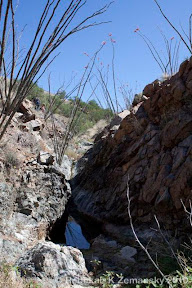 |

|
Finally, while my team headed back to cover Saturday’s protest events, I spent one more day in Tucson to ride along on a Samaritan patrol. My classmates and I have been in talks to do a Border Patrol ride along too, as both are great ways to get out and see the landscape and understand what people are literally going through.

|
Tags: Arizona, immigrants, immigration, live broadcast, march, Operation Streamline, Phoenix, protest, SB-1070, Telemundo, Tucson
On Tuesday, we drove north to Sedona. Finals ended last Friday, and I start a fellowship next Monday, so this was our opportunity to hit the road. It was large part break and small part assignment, to scope the city and the scenery for my mother who’s always been interested in going.
We saw beautiful scenery.
 |
 |
 |
 |
 |
We met a group of interesting little birds.
 |
 |
On the way back, we discovered what difference light can make – the two sets photos below were taken in the same place, from slightly different angles and a little shutter speed tinkering on my part.
 |
 |
 |
 |
Overall, a great afternoon…
 |
| From Sedona, Arizona (May 2010) |
Tags: Arizona, birds, flowers, lighting, photography, red rocks, rest stop, road trip, Sedona, sunset
Creative nonfiction, narrative journalism, long form reporting – whatever you call it, that’s what this week’s Must See Monday / Cronkite Conversation was about. As an aspiring writer myself, I’d been looking forward to this one ever since this semester’s event list came out. I didn’t know a lot about creative nonfiction, mostly just two things. I knew that it was included in KU’s new MFA program which one of my favorite professors at KU had worked hard to set up. Also, to borrow a phrase, I know creative nonfiction – and appreciate it – when I see it.
Oh, and I know that creative nonfiction’s relationship with journalism is new and growing. There’s lots of discussions about how journalism is changing – are newspapers going to survive, must journalists master multiple media formats, and will stories go mobile? But change isn’t always dramatic. Reporters who are seeing their audience respond to creative nonfiction are learning how even more subtle changes can make a big difference. The definitions of creative nonfiction are well discussed all over the web (like here, here, here, and here) so I’ll cut to the chase : great advice from great writers.
Lee Gutkind Lee Gutkind is editor of Creative Nonfiction as well as being writer-in-residence for the Consortium For Science, Policy, and Outcomes and working with The Virginia G. Piper Center for Creative Writing. Terry Greene Sterling is also writer-in-residence at ASU – her blog is here and her newest book, Illegal, will be coming out this fall.
Gutkind pointed out that with creative nonfiction, creative equals the dramatic part, and nonfiction equals the journalism and information part. “Every time you write a story, every single time you think about a story, you’re trying to draw the reader in as long as possible” – creative nonfiction is one way to do this, whether it’s personal narrative about the journalist or public narrative the journalist writes about others. Either way, the building blocks for creative nonfiction are scenes. Gutkind uses the yellow test – taking a favorite piece of writing and a yellow magic marker, then highlighting all the scenes.
“If you’re doing a serious story, 50 to 60 to 70 % should be scenes,” Gutkind said. “The way I work – I gather my information and think of the stories, and am constantly thinking of where the stories go.” He sits down and writes the scenes of the story, then looks for where the information goes and “the story determines the information you provide, the story determines the reportage – so instead of worrying about the reporting, I get the information the story needs.”
Gutkind doesn’t just work with journalists – when he’s not working on Creative Nonfiction, he’s applying creative nonfiction to other kinds of narrative like science and law through a mixture of classes and workshops. In fact, Gutkind said that in some ways it’s easier to teach scientists, historians and lawyers to start writing, since journalists are often very set in short, short formats – they must break familiar writing patterns to switch to creative nonfiction.
For Sterling, narrative journalism equals telling true stories that matter…and that people love to read, and hear, and see, and interact with. It uses the techniques of fiction to tell true stories. She points out that you can’t be a good writer if you can’t be a good reporter since you have to have the material first – Sterling describes public records as “gold.” Also, narrative journalism doesn’t come easy and “you have to train yourself – train yourself every single day.” Sterling described narrative journalists as risk takers who “should learn something new very single day” and “see stories everywhere.”
Sterling organizes her work as she goes along by keeping running lists on the whole project and each section and going over her notes regularly. She said that her stories evolve during the reporting and then the framework comes together. Finally, it’s important to tell the reader how she got the story – it’s also tricky to work citations in to a narrative form. Writers like Sterling and Lane DeGregory, who don’t want to clutter the narrative put the attribution at the end.
During the questions and answers, two other attending journalists – New Times reporter Robrt Pela and freelance award winner Valeria Fernández – also answered questions about they organize their work. Fernández described her work as making a good meal – she gathers the ingredients, starts cooking, and gets more salt as needed. She uses “check on this” markers to get the story down. Pela calls these “apocryphal markers” and uses them for follow up interviews. I really appreciated this advice, and the rest of the evening. Coming back from break can be hard, but having the first day back end with inspiration sets a strong precedent for the rest of the semester.
Tags: blog, Consortium For Science Policy and Outcomes, creative nonfiction, Cronkite conversations, freelance, Lee Gutkind, long form journalism, Master of Fine Arts, MFA, narrative journalism, New Times, Robrt Pela, story organization, Terry Greene Sterling, Tom Lorenz, University of Kansas, Valeria Fernández